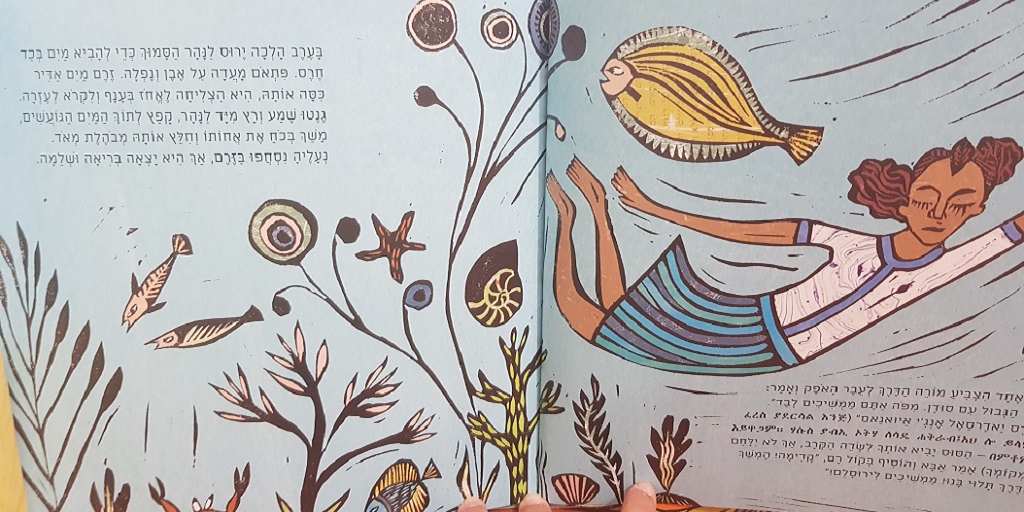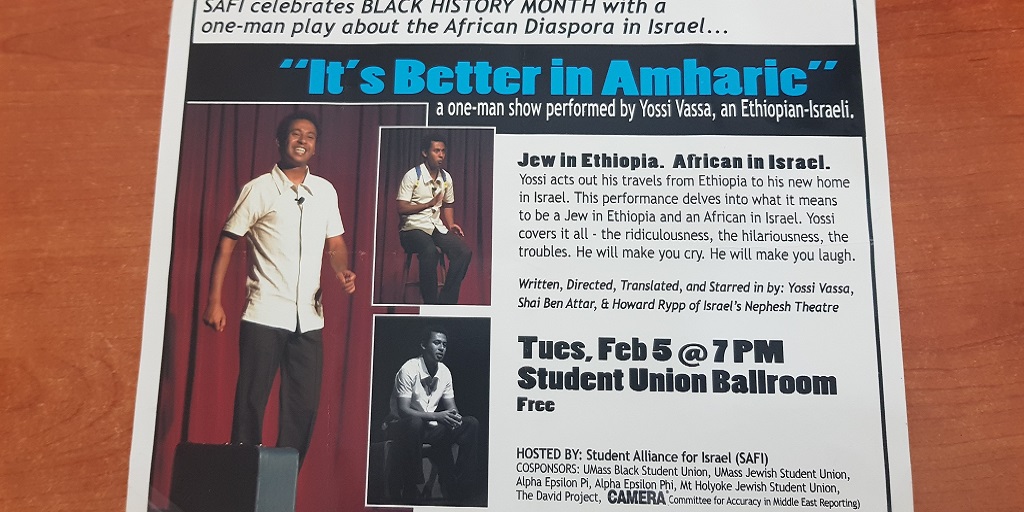The holiday of Sigd is an Ethiopian Jewish holiday that became a national Israeli holiday in 2008. It takes place 50 days after Yom Kippur, and celebrates when G-d was first reveled to Moses. Ethiopian Jews climb up to the top of a mountain in the morning, while fasting. The religious leaders carry the “Orit,” or the Ethiopian Torah, written in Geez. Some will read Psalms, like the Song of Songs. In the afternoon, the community comes down from the higher point and break their fast. The national ceremony takes place on Armon HaNatziv Promenade in Jerusalem.What does it mean to have sigd in Israel? Since, it’s become a more popular holiday with major leaders attending, such as Nir Barkat, Shimon Peres, and Chief Rabbi Yitzhak Yosef.
There is a hope or a prayer for all Jews to be united and remember to stay as one larger family. However, often times, Israelis, and Diaspora Jews, can forget about the Ethiopian tile of our Jewish mosaic—the Ethiopian member of our larger Jewish family. And so, in honor of the holiday of Sigd in Israel, I would like to share some Ethiopian figures, books, music, and other cultural aspects. When we understand these aspects and figures, we can better understand our Ethiopian brothers and sisters, and we can have a better grasp Judaism as a whole.
“Yerus Holechet L’Yerusalem” Book
The book Yerus Holechet L’Yerusalem, or Yerus goes to Jerualem, tells the story of a young, Jewish girl from Ethiopia and her long trek to the holy city of Jerusalem. While the book is a children’s book, it is a great start to understand the background of how and where the Ethiopian Israeli chapter began. The book explains the relatively new Ethiopian community of Israel coming in the 1980’s. The book is also aimed to educate young Israeli children about the Ethiopian Israeli community. In this regard, the book makes an active effort to teach others about people who may be different.

Kafe Shachor Chazak
Kafe Shachor Chazak means strong black coffee in Hebrew. But it is also the name of a musical duet of two Ethiopian Israelis, Uri Alamo and Ilak Sahal, and are cousins. Both moved to Israel as children to Netanya, and moved to Hadera after the army. The two became popular when they came out with the song “I Know That Everything Will Be OK.” Many of their songs deal with issues Ethiopian Israelis face today in the country. The two have become so popular that they have played for Israeli Independence Day’s national ceremony at Mount Herzl. AND in 2015, Café Shachor Hazak was a nominee for the MTV “Europe Music Awards Best Israeli Act” award.
“From Sinai to Ethiopia” by Rabbi Sharon Shalom
Both the book “From Sinai to Ethiopia” and it’s author Rabbi Sharon Shalom are important in the Ethiopian Israeli community. Some of us may have heard of the religious book of the Shulchan Aruch, or a collection of rules how to live a righteous day-to-day life. However, while the Shulchan Aruch addresses Ashkenazi and Sephardic practices, it doesn’t address practices specific to the Ethiopian community. The Jewish community in Ethiopia is thousands of years old, and until they began coming to Israel, they were an isolated community. Therefore, the Jews in Ethiopia developed some practices of their own, including the holiday of Sigd. So when the Ethiopian Jews arrived to Israel, they needed a sort of Shulchan Aruch of their own. “From Sinai to Ethiopia” is a sort of an Ethiopian version.
Rabbi Sharon Shalom is an Ethiopian Israeli who moved to Israel when he was young. At the age of eight, in 1982, he came to the country, and he grew up in a children’s home in Afula. Today, he teaches and lectures at Bar Ilan University and Tel Aviv University, and is the Rabbi at Kedoshei Yisrael in Kiryat Gat. He is a prominent figure on Ethiopian Jewish identity, history, and practice.
Yossi Vasa
Yossi Vasa is an Ethiopian Israeli actor, famous for several Israeli television shows, like Nesbu. Like many of the stories I’ve shared here, Yossi was born in Ethiopia and moved to Israel as a child. He started his career acting in a one man show about the struggles of being Jewish in Ethiopia and Ethiopian in Israel. In fact, he came to UMASS while I was studying. I remember his performance very well—the entire audience cried from laughter. Years later, when I began watching the show Nesbu, I recognized him as the actor from all the years before!

Yityiah “Titi” Aynaw
Titi was born in 1991 in Chahawit, Ethiopia. She came to Israel with her brother, Yellek, after their parents passed away. They lived with her grandparents in Netanya, Israel. After high school, she served in the Military Police Corp in the I.D.F. In 2013, she won the Miss Israel competition, being the first Ethiopian Israeli to win the competition. That year, The Jerusalem Post, named her as the 39th most influential Jew. Also in 2013, she continued to represent Israel at the Miss Universe 2013 in Moscow. She placed second in the 7th season of Israeli Survivor in Honduras. And later, she won Israel Big Brother. Today, she works in the fashion industry, and has told CNN that she wants to be a role model for her community. Titi is working on establishing a community arts education center in Netanya that will serve at- risk youth.
Adis Alem Restaurant
Adis Alem is an Ethiopian restaurant in my hometown of Ashdod. Like Yossi Vasa, the restaurant owner is a one- woman act! She prepares, she cooks, she serves, she cleans. And the food is amazing!!! Israelis of all backgrounds in Ashdod come to eat at Adis Alem. And during the time of Sigd in Israel she is super busy preparing meals for all those celebrating the holiday in Ashdod and the area.

Ethiopian Memorial at Mount Herzl
Mount Herzl in Jerusalem is the national military and political cemetery. It is divided into three major parts:
1. The burial space for Prime Ministers, Presidents, Speakers of the Parliament, and other politicians.
- The military section for soldiers killed in duty.
- Memorials for different groups and events.
The Ethiopian memorial falls into the third section. It was erected in 2007, in memory of these victims who died on their way from Ethiopia to Israel, especially in Sudan. Since there have been several attempts to document the names of all these victims in order to add the names to the memorial. However, until November 2011, this wasn’t done officially by the Israeli government. On November 27, 2011, the Israeli Parliament passed two resolutions:
- To memorialize the names of the victims
- A production of a documentary about the victims
On August 30, 2012, the Israeli government signed an agreement with the World Zionist Organization to help implement this plan. Some commemorate Sigd in Israel by coming to this spot.
So, what does it mean to have Sigd in Israel?
These are just a few of the figures and symbols of the Ethiopian Jewish and Ethiopian Israeli society. There are many more restaurants, books, and figures from Ethiopian community, society, and culture. There are so many other ways to celebrate Sigd in Israel. This is just our start to understanding the Ethiopian community and the Jewish community as a whole. Have a happy Sigd in Israel everyone!!!





